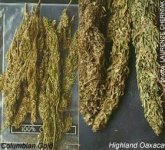You are using an out of date browser. It may not display this or other websites correctly.
You should upgrade or use an alternative browser.
You should upgrade or use an alternative browser.
Vintage Mexican, Seed germination and Micro propagation techniques.
- Thread starter Mystic Funk
- Start date
B
back_woods
vermontman
you always bring the shizzit
you always bring the shizzit
Mystic Funk
Well-known member
that's what i'm talking about!!!

bring on the gold!!!
that's what i'm talking about!!!
bring on the gold!!!

I have my fingers crossed for you. If I may If you get a very desirable female or more. Do the stem rub sniff test to find a suitable male possibly same strain. Regen cuts of best female after you get seed from her And do at least three back crosses to her from her seed line to fix traits.
Mystic Funk
Well-known member
I have my fingers crossed for you. If I may If you get a very desirable female or more. Do the stem rub sniff test to find a suitable male possibly same strain. Regen cuts of best female after you get seed from her And do at least three back crosses to her from her seed line to fix traits.
i plain on doing just that and crossing all the plants that look alike, separating them by region if i can tell. i'll need your help with this one vermontman.
 then i can further select them in the f1's f2's etc...
then i can further select them in the f1's f2's etc... i would also like to do a open pollination with very little selection at all, and only take out junk plants and any indica.
that way i won't loose any traits that i find out later were good.
I have been doing some reading and I hear some Mexican and Columbian's can have pretty wide leaves.... is this true??
if so can someone please post up some pictures of these leafs so i can see what i'm looking for. i'm not very fluent with all the varieties of south American. i would hate to kill any rare plants...
Any help would be greatly appreciated.

peace!
-mystic
Hi, here you have a picture, that perhaps help you to tell apart the Mexican seeds.
https://books.google.es/books?id=po...A296&focus=viewport&dq=chinese+blh+hemp&hl=es
Mexican plants:
https://www.icmag.com/ic/showthread.php?p=2838264#post2838264
https://www.icmag.com/ic/showpost.php?p=7605658&postcount=40
You have a whole thread about Mexicans here: https://www.icmag.com/ic/showthread.php?t=218636
As far as I know old Mexicans and Colombians have very narrow leaflets. I think the Colombians usually have them narrower than the Mexicans. The new Afghani hybrids grown now in Mexico are much stockier and with wider leaves, and carry their typical strong stinky smell.
http://www.cannabisculture.com/content/2005/06/28/4280
Here you have a few Colombians more: https://www.icmag.com/ic/showthread.php?t=99112
Greetings
https://books.google.es/books?id=po...A296&focus=viewport&dq=chinese+blh+hemp&hl=es
Mexican plants:
https://www.icmag.com/ic/showthread.php?p=2838264#post2838264
https://www.icmag.com/ic/showpost.php?p=7605658&postcount=40
You have a whole thread about Mexicans here: https://www.icmag.com/ic/showthread.php?t=218636
As far as I know old Mexicans and Colombians have very narrow leaflets. I think the Colombians usually have them narrower than the Mexicans. The new Afghani hybrids grown now in Mexico are much stockier and with wider leaves, and carry their typical strong stinky smell.
http://www.cannabisculture.com/content/2005/06/28/4280
Colombia – (0 to 10 north latitude)
Colombian Cannabis originally could be divided into two basic strains: one from the low-altitude humid coastal areas along the Atlantic near Panama, and the other from the more arid mountain areas inland from Santa Marta. More recently, new areas of cultivation in the interior plateau of southern central Colombia and the highland valleys stretching southward from the Atlantic coast have become the primary areas of commercial export Cannabis cultivation. Until recent years high quality Cannabis was available through the black market from both coastal and highland Colombia. Cannabis was introduced to Colombia just over 100 years ago, and its cultivation is deeply rooted in tradition. Cultivation techniques often involve transplanting of selected seedlings and other individual attention. The production of “la mona amarilla” or gold buds is achieved by girdling or removing a strip of bark from the main stem of a nearly mature plant, thereby restricting the flow of water, nutrients, and plant products. Over several days the leaves dry up and fall off as the flowers slowly die and turn yellow. This produces the highly prized “Colombian gold” so prevalent in the early to middle 1970s (Partridge 1973). Trade names such as “punta roja” (red tips [pistils] ), “Cali Hills,” “choco,” “lowland,” “Santa Marta gold,” and “purple” give us some idea of the color of older varieties and the location of cultivation.
In response to an incredible demand by America for Cannabis, and the fairly effective control of Mexican Cannabis importation and cultivation through tightening border security and the use of Paraquat, Colombian farmers have geared up their operations. Most of the marijuana smoked in America is imported from Colombia. This also means that the largest number of seeds available for domes tic cultivation also originate in Colombia. Cannabis agri-business has squeezed out all but a few small areas where labor-intensive cultivation of high quality drug Cannabis such as “Ia mona amarilla” can continue. The fine marijuana of Colombia was often seedless, but commercial grades are nearly always well seeded. As a rule today, the more remote highland areas are the centers of commercial agriculture and few of the small farmers remain. It is thought that some highland farmers must still grow fine Cannabis, and occasional connoisseur crops surface. The older seeds from the legendary Colombian strains are now highly prized by breeders. In the heyday of “Colombian gold” this fine cerebral marijuana was grown high in the mountains. Humid lowland marijuana was characterized by stringy, brown, fibrous floral clusters of sedative narcotic high. Now highland marijuana has become the commercial product and is characterized by leafy brown floral clusters and sedative effect. Many of the unfavorable characteristics of imported Colombian Cannabis result from hurried commercial agricultural techniques combined with poor curing and storage. Colombian seeds still contain genes favoring vigorous growth and high THC production. Colombian strains also contain high levels of CBD and CBN, which could account for sedative highs and result from poor curing and storage techniques. Domestic Colombian strains usually lack CBD and CBN. The commercial Cannabis market has brought about the eradication of some local strains by hybridizing with commercial strains.
Colombian strains appear as relatively highly branched conical plants with a long upright central stem, horizontal limbs and relatively short internodes. The leaves are characterized by highly serrated slender leaflets (7-11) in a nearly complete to overlapping circular array of varying shades of medium green. Colombian strains usually flower late in temperate regions of the northern hemisphere and may fail to mature flowers in colder climates. These strains favor the long equatorial growing seasons and often seem insensitive to the rapidly decreasing daylength during autumn in temperate latitudes. Because of the horizontal branching pattern of Colombian strains and their long growth cycle, pistillate plants tend to produce many flowering clusters along the entire length of the stem back to the central stalk. The small flowers tend to produce small, round, dark, mottled, and brown seeds. Imported and domestic Colombian Cannabis often tend to be more sedative in psychoactivity than other strains. This may be caused by the synergistic effect of THC with higher levels of CBD or CBN. Poor curing techniques on the part of Colombian farmers, such as sun drying in huge piles resembling com post heaps, may form CBN as a degradation product of THC. Colombian strains tend to make excellent hybrids with more rapidly maturing strains such as those from Central and North America.
Marijuana Botany
An Advanced Study: The Propagation and
Breeding of Distinctive Cannabis
by Robert Connell Clarke
Here you have a few Colombians more: https://www.icmag.com/ic/showthread.php?t=99112
Greetings

Mystic Funk
Well-known member
thanks Ahortator!
here's some known varieties I started.
Columbian gold
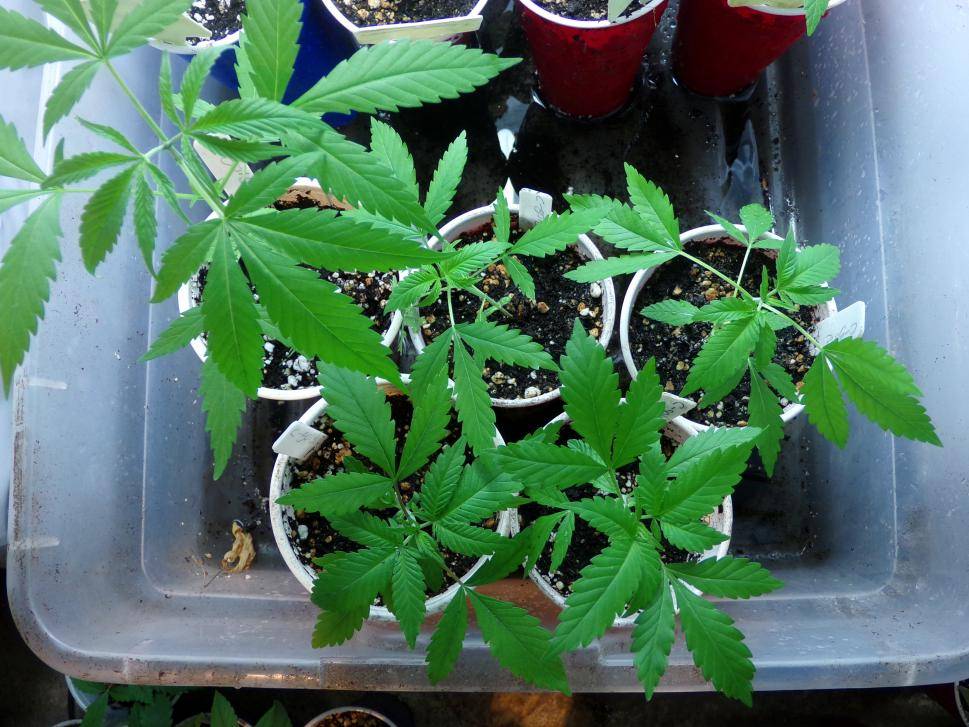
black tuna Columbian
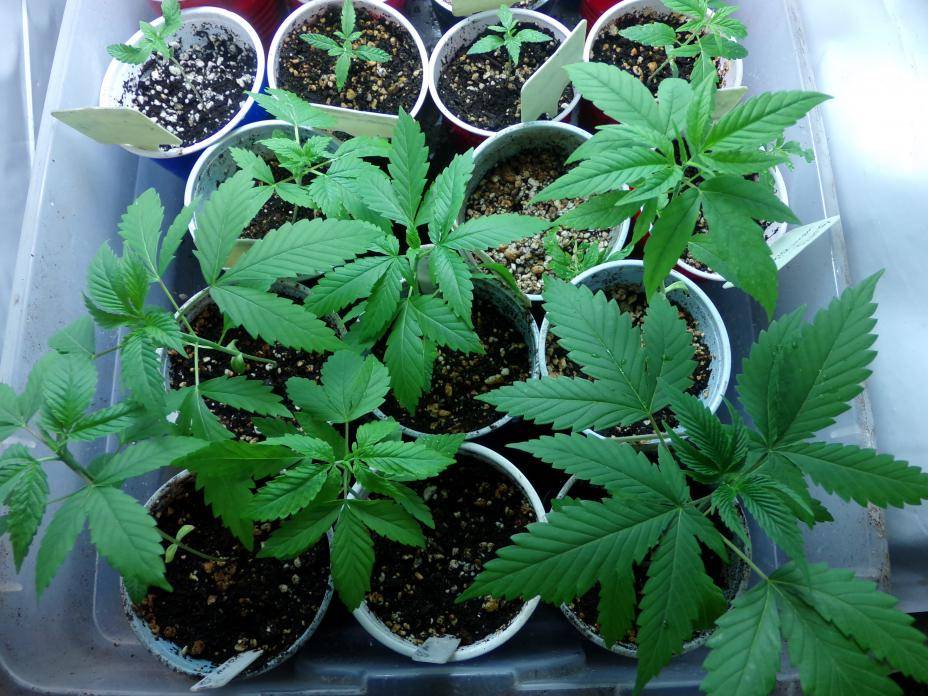
Ace panama
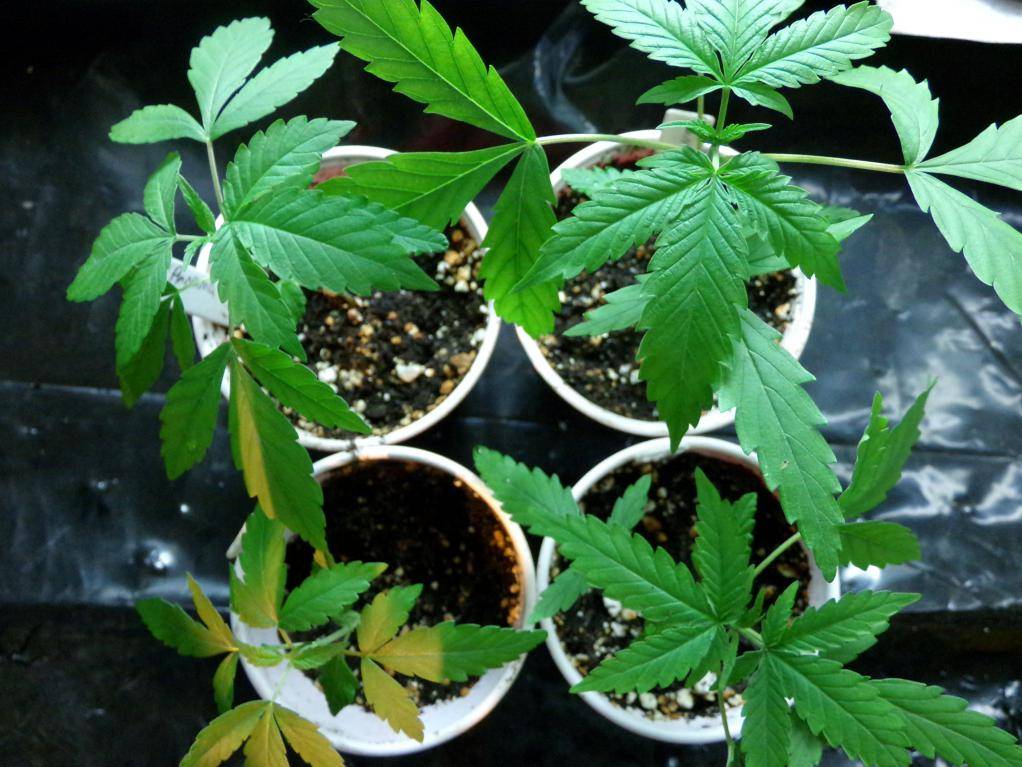
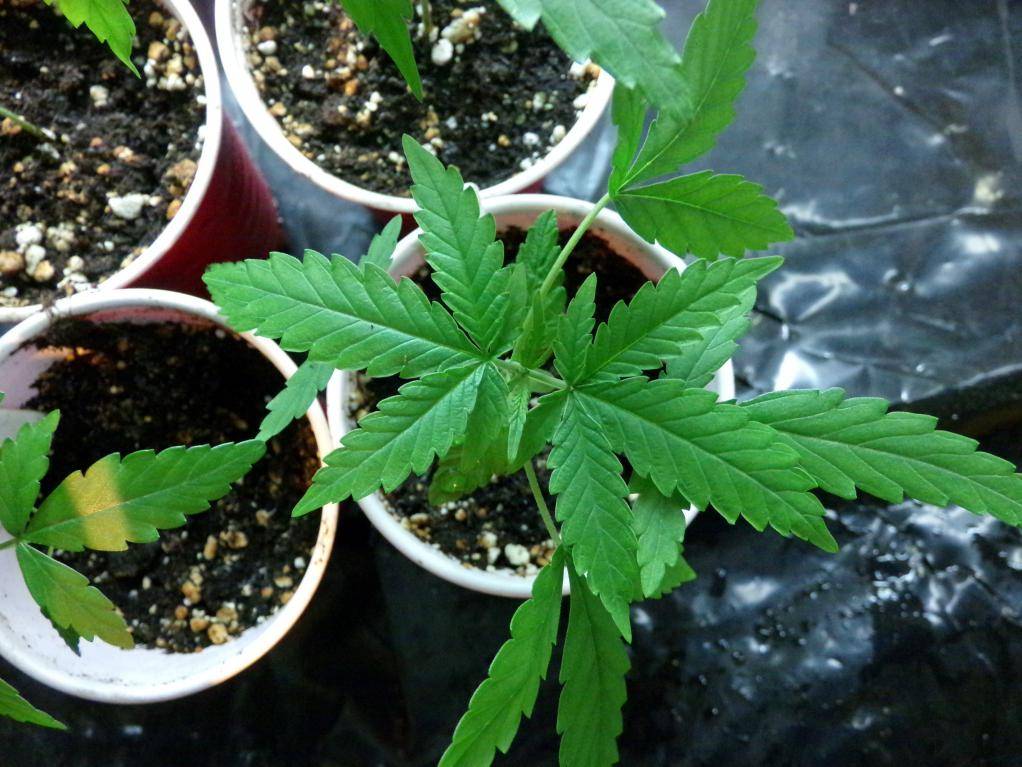
here's some known varieties I started.
Columbian gold
black tuna Columbian
Ace panama
Mystic Funk
Well-known member
Here's a little GA3 seedling update.
The few seeds that did sprout are stretching like crazy and they all have single blade leafs. I have run into this before and I thought this would happen...
well it was a good experiment to try, but these will most likely be trashed.
I guess if you had to use ga3 to pop old seeds and you had the time to nurse them until they start to grow normally again then go for it. but from what I've seen with the other methods, I would use the others before using ga3 again.
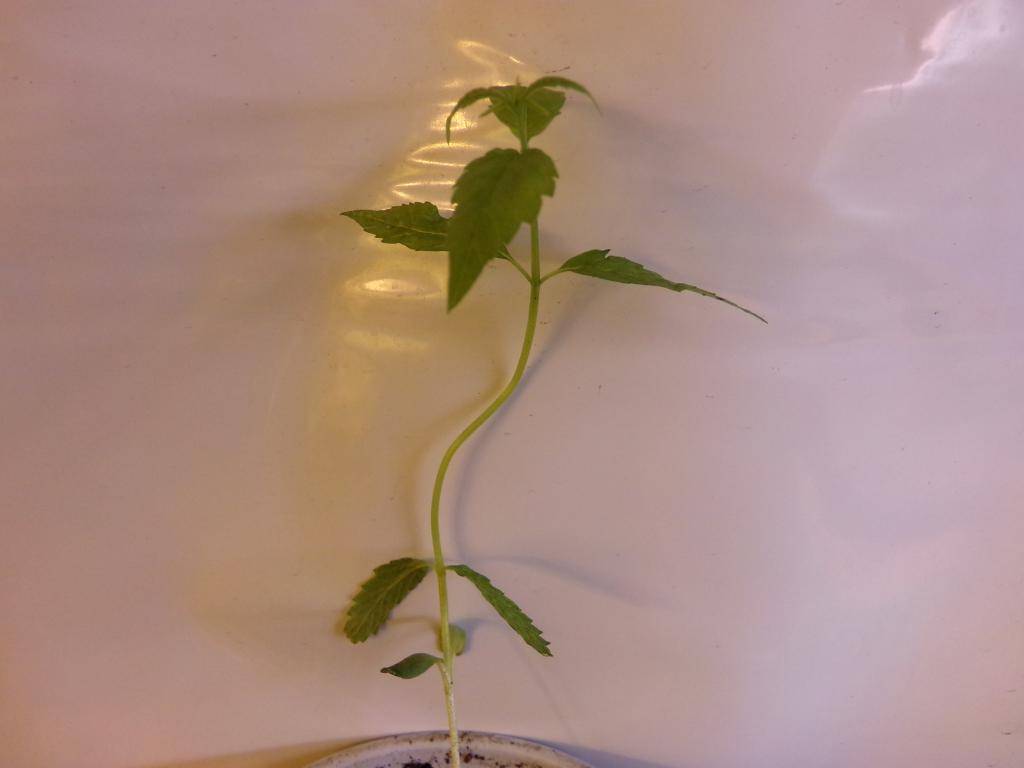
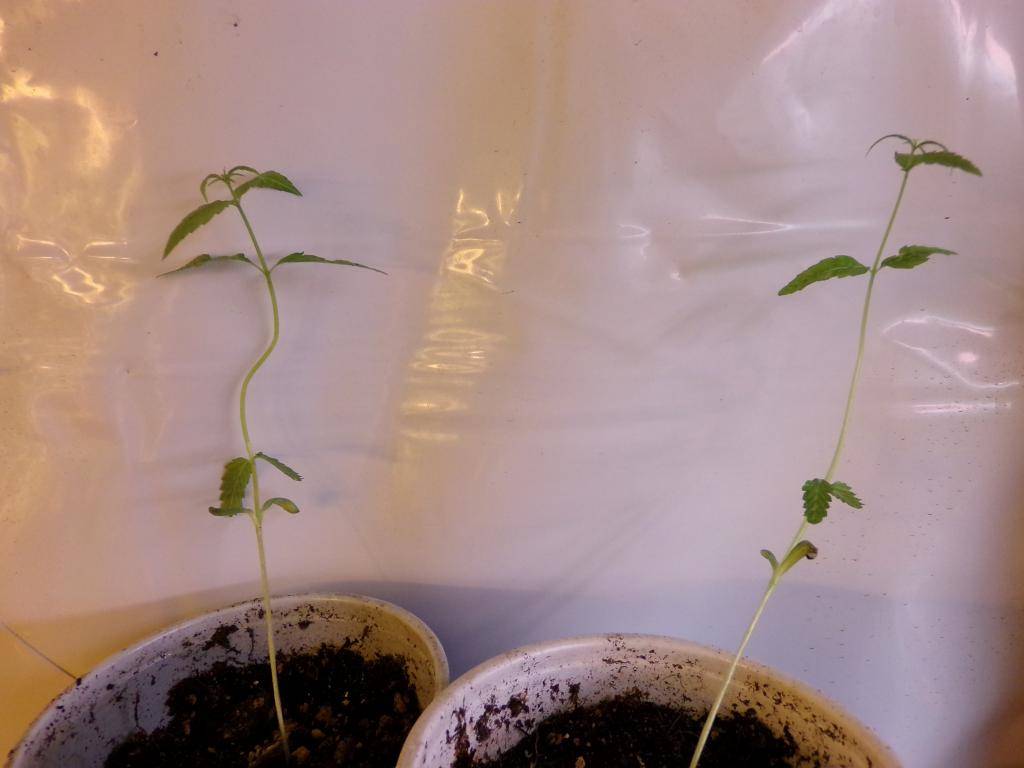
The few seeds that did sprout are stretching like crazy and they all have single blade leafs. I have run into this before and I thought this would happen...
well it was a good experiment to try, but these will most likely be trashed.
I guess if you had to use ga3 to pop old seeds and you had the time to nurse them until they start to grow normally again then go for it. but from what I've seen with the other methods, I would use the others before using ga3 again.
Mystic Funk
Well-known member
that's true troutman.
using high amounts of ga3 just forces the embryo to pop the seed hull. but at the same time the now seedling is over loaded with ga3 and continues to stretch for a long time after that.
if I do end up running these to the end I wouldn't be surprised if they turn out male.
also I did a seed scuffing test recently but they got contaminating and were all moldy so I tossed them. I will try and get another test up soon. a good friend of mine told me about seed chipping too that I would like to try.
peace
-mystic
using high amounts of ga3 just forces the embryo to pop the seed hull. but at the same time the now seedling is over loaded with ga3 and continues to stretch for a long time after that.
if I do end up running these to the end I wouldn't be surprised if they turn out male.
also I did a seed scuffing test recently but they got contaminating and were all moldy so I tossed them. I will try and get another test up soon. a good friend of mine told me about seed chipping too that I would like to try.
peace
-mystic
troutman
Seed Whore
Mold?
I would disinfect my seeds with dilute hydrogen peroxide.
BTW: Check this long article out.
https://www.ncbi.nlm.nih.gov/pmc/articles/PMC4740362/
I would disinfect my seeds with dilute hydrogen peroxide.
BTW: Check this long article out.
https://www.ncbi.nlm.nih.gov/pmc/articles/PMC4740362/
Mystic Funk
Well-known member
Mold?
I would disinfect my seeds with dilute hydrogen peroxide.
BTW: Check this long article out.
https://www.ncbi.nlm.nih.gov/pmc/articles/PMC4740362/
I soaked the seeds over night in ph'd water with a 1% hydrogen peroxide but about a week later they got mold. i'm not sure what happened.
I 'm going to try it again maybe i'll add a little more.
thanks for the article!
https://www.icmag.com/ic/attachment.php?attachmentid=389239&stc=1&d=1482131047
If you get any buds like this, please make seeds and send to seedbay.
On the gibberellic acid, I just help the sprouts out of the seed shell by hand. With magnification I can do it without hurting the embryo.
If you get any buds like this, please make seeds and send to seedbay.
On the gibberellic acid, I just help the sprouts out of the seed shell by hand. With magnification I can do it without hurting the embryo.
Attachments
Thou i haven't used much hydrogen peroxide since my few hydro grows 10 years ago, to me 1% seems really mild and i'm not sure the oxidation effect is so strong that it would kill every germ.I soaked the seeds over night in ph'd water with a 1% hydrogen peroxide but about a week later they got mold. i'm not sure what happened.
I 'm going to try it again maybe i'll add a little more.
thanks for the article!
..the 30% H2O2 i used is strong as hell and will burn holes on your skin in a second or two if you get some on you, so an over night soak in that stuff would be too much, he-he.
Yea, maybe try with stronger % of H2O2 but shorter soak/rinse time.
I doubt a 10% H2O2 would be too strong if the seed hull is perfectly sealed and the dip/rinse time isn't too long
But like i said, i have no experience with soaking seeds in that stuff, but 1% seems mild to me.
Good luck
troutman
Seed Whore
I soaked the seeds over night in ph'd water with a 1% hydrogen peroxide but about a week later they got mold. i'm not sure what happened.
I 'm going to try it again maybe i'll add a little more.
thanks for the article!
Use the hydrogen peroxide later on as well as it takes a while for some organisms to show up.
Maybe a weekly treatment will do the trick?
Mystic Funk
Well-known member
How are the little ones doing now Mystic Funk? I have another new one, so now we have 3.
Their doing pretty good, almost ready to be transplanted!!
I was talking to a guy that's from Mexico and he said don't trash any ones that look indica early in growth, because a lot of Mexican varieties, the leaves and growth patterns will change over to sativa later....
Mystic Funk
Well-known member
seeded
Active member
My experience with sativa landraces is limited but from what I've seen so far I'd put money on the indica looking leaves being a survival trait that gives the youngins a bit of a head start in life by catching more light from day one. It might just be me but the plants I've had like that always grew bigger and faster than their siblings but once sexually mature and cuttings taken they've acted the same as every other plant which is why I think it's a trait that's really only beneficial in the early days.
Keep up the good work Mystic Funk, they look great and I'm keen as to see how these Mexican plants grow for you
Keep up the good work Mystic Funk, they look great and I'm keen as to see how these Mexican plants grow for you

Latest posts
-
-
-
The Truth About Photoperiods!
- Latest: Verdant Whisperer
-
Latest posts
-
-
-
The Truth About Photoperiods!
- Latest: Verdant Whisperer
-

